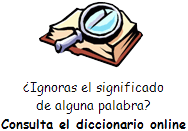'Deepfake' Videos: a New Weapon in
Disinformation Wars
New technology is making it possible for people to make realistic videos
of people appearing to say things they never actually said.
The videos are known as “deepfakes.”
The name comes from the process of deep learning, a form of artificial
intelligence, or AI. They can be created with computer programs
available for sale or on the internet. The technology uses face mapping
and AI to produce false videos that look almost real.
Lawmakers, intelligence officials and media experts have expressed
concern about deepfakes. They warn the false videos could be used to
threaten America’s national security or interfere in elections.
The videos are created by loading a complex set of instructions into a
computer, along with lots of images and audio recordings. The computer
program then learns how to copy the person’s facial expressions,
movements, voice and speaking patterns.
Technical experts say, with enough video and audio of a person, the
system can produce fake video of the person saying anything.
Florida Senator Marco Rubio is one of several U.S. lawmakers warning of
the dangers of such technology. He says that, so far, deepfakes have
mainly been used against famous people or to create humorous videos. But
he says he can imagine foreign nations finding ways to use them to harm
American democracy and society.
Rubio told the Associated Press that a foreign intelligence service
could use the technology. Such an actor could produce a fake video of a
politician using racist language or doing something illegal. Or they
could produce fake video of a U.S. soldier killing civilians overseas or
a foreign leader threatening nuclear war.
“It’s a weapon that could be used - timed appropriately and placed
appropriately - in the same way fake news is used,” Rubio said. But in
video form, such news could create distrust and chaos before an election
or any other major U.S. decision, he added.
“We know there are people out there that are trying to divide society,
influence elections, and we know this capacity exists. So it's only
logical that at some point someone's going to take the next step and
sort of weaponize it.”
The issue got attention earlier this year when the website BuzzFeed
published a deepfake political video. The false video appeared to show
former President Barack Obama giving an address that criticized
President Donald Trump.
You see, I would never say these things, at least not in a public
address. But, someone else would.
It was created using a combination of professional and free video
editing programs using machine learning.
Hany Farid is a digital forensics expert at Dartmouth College in
Hanover, New Hampshire. He agrees there is a great possibility that
deepfakes will be used to try to influence America’s politics. “I expect
that here in the United States we will start to see this content in the
upcoming midterms and national election, two years from now.”
The problem, Farid says, is that it will be very easy for almost anybody
to create a realistic-looking fake video of world leaders. “We have
entered a new world where it is going to be difficult to know how to
believe what we see,” he told the Associated Press.
He added that the opposite result is also worrying. People will become
so used to seeing false videos that they will be more likely to doubt a
real video. Farid expects the problem to spread worldwide.
The U.S. Defense Advanced Research Projects Agency (DARPA) is already
working to develop technologies to identify fake images and videos. But
Senator Rubio says, currently, the identification process is complex and
takes a very long time.
“It takes some real forensic capability, technical capabilities, to be
able to show that it's not real. And by the time that's done, it's been
widely disseminated.”
Rubio and other lawmakers say people will need to take more
responsibility to identify fakes. |
![]() ).
Utiliza el botón derecho del ratón y "guardar enlace" para descargar el
fichero a tu PC, tablet, Smartphone, etc.
).
Utiliza el botón derecho del ratón y "guardar enlace" para descargar el
fichero a tu PC, tablet, Smartphone, etc.![]() Escucha el audio
Escucha el audio



